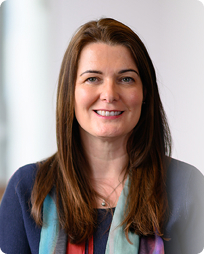Digital Catapult’s first Quantum Technology Access Programme (QTAP) raised awareness, educated end users, and fostered industry partnerships to drive the future adoption and commercialisation of quantum computing. During this first-of-a-kind programme, quantum experts from Digital Catapult and the programme partners ORCA Computing and Riverlane supported participants to explore novel quantum computing use cases.
Accelerating the commercialisation of nuclear fusion with Oxford Sigma

Can quantum computing help design fusion reactors
Oxford Sigma, an advanced materials fusion technology company that addresses the production of sustainable advanced materials for the commercial deployment of nuclear fusion, wanted to use quantum computing for challenging computational fluid dynamic calculations that are needed to design nuclear fusion reactors.
In nuclear fusion two light atomic nuclei combine to form a heavier nucleus, releasing significant amounts of energy – this is the opposite to traditional nuclear fission where energy is made by splitting atoms. A ‘Tokamak’ fusion reactor is shaped like a doughnut and uses strong magnetic fields to confine plasma at the extreme temperatures required for nuclear fusion to take place. As such the flow of the liquid metals through the magnetic fields in the fusion reactor needs to be accurately calculated. These metals conduct electricity, so Maxwell’s equations are relevant, as are Navier-Stokes equations that describe fluid flow.
A large number of competing and complex effects result in large pressure drops and jet-like flows on the outer boundaries of the fluid plasma. These “magnetohydrodynamic” calculations take massive classical computer resources to perform.
A quantum enabled speedup would support:
- Modelling of more complex geometries and magnetic environments.
- De-risking novel and high-performance breeder blanket designs.
- Accelerating the commercialisation of nuclear fusion.
What was done?
The Oxford Sigma team received quantum computing education and training, including detailed training by Riverlane on Error Correction and the new fault tolerant Quantum Singular Value Transformation (QSVT) algorithm. This algorithm can be used for matrix inversion as well as computational fluid dynamics. The team gained experience from hands-on implementation with block encoding, phase factors and QSVT with Qiskit, a quantum computing simulator developed by IBM.
The team also explored a use case specific to Oxford Sigma: a two dimensional cavity lid with fluid properties resembling lead-lithium. The lid was modelled as a 50×50 mesh.
Riverlane calculated that the Oxford Sigma pressure coefficient matrix would require a QSVT polynomial degree of over 230 million to invert the matrix. A dense block encoding was used whereas a more efficient method should take advantage of matrix structure. Coefficient matrices from full magnetohydrodynamic simulation would be denser and larger, requiring inefficient block encoding and have even higher polynomial degree. This result provided useful insights to Oxford Sigma on next steps, which are to take advantage of the matrix structure to make it easier to invert. The team found that the programme overall had provided a lot of useful knowledge about quantum computing.

The Quantum Technology Access Program (QTAP) enabled Oxford Sigma to explore fault-tolerant quantum algorithms for solving complex magnetohydrodynamic flow problems within nuclear fusion breeder blankets. Thanks to the exceptional support from the QTAP and Riverlane teams, Oxford Sigma rapidly acquired both fundamental and practical knowledge in quantum computing. Additionally, the program facilitated valuable connections with quantum industry experts, researchers, and like-minded companies.
Gabriel Blackett Engineer at Oxford Sigma
Watch the highlights video from the showcase
Get involved
Be the first to receive news and updates about our work with quantum. Fill out your details in the form below.
Related topics

Quantum Technology Programme
Separating opportunity from hype to understand industry challenges that may be best solved by quantum computing.
Leading businesses showcase the potential for quantum computers to transform energy, infrastructure and engineering
Leading businesses on Digital Catapult’s Quantum Technology Access Programme (QTAP) showcase the potential for quantum computers to transform energy, infrastructure…
Digital Catapult launches Quantum Technology Access Programme with eleven leading British businesses, to improve the quantum readiness of key UK industries
Digital Catapult announces eleven leading British businesses have been accepted onto a first-of-its-kind Quantum Technology Access Programme, to overcome industrial…














































